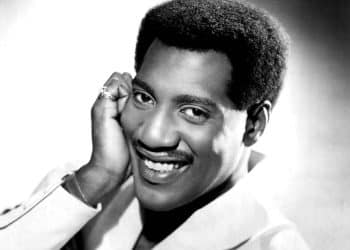Pop songs that dominate the airwaves can often be cynically derided as simplistic or generic, but there is a rigorous creative process that goes into crafting the perfect pop hit. A previously indefinable quality of many successful pop songs has now become known and observed as the Millennial Whoop, while listeners are becoming increasingly aware of pop’s reliance on certain sounds, effects, and chords. An awareness of songwriters’ techniques doesn’t make them any less effective, though.
The Millennial Whoop
Patrick Metzger coined the term “Millennial Whoop” in analysis for The Patterning, defining it as “a sequence of notes that alternates between the fifth and third notes of a major scale”. Metzger had observed how 2016 artists were loving the Whoop, while exploring how the trend had developed throughout the last decade and a half. The charm of the Whoop is in its simplicity. Two songs using the same extended melodies inevitably invite comparisons, but it’s hard to claim sole ownership over two notes. Similarly, lyrics are easy to plagiarize but it is impossible to declare that one individual invented the “Wa-oh” that constitutes the Whoop.
“California Gurls” by Katy Perry is one of most influential proponents of the Millennial Whoop. This remains one of Perry’s most famous hits, spending six straight weeks atop the Billboard Hot 100. “California Gurls” effective execution of the Whoop inspired similar uses by artists ranging from One Direction to The Lumineers. Demi Lovato also whoops her way to success in “Really Don’t Care”, with the song featuring Cher Lloyd amassing over 100 million streams in both audio and video. The Millennial Whoop is not a guarantee of pop success, but used effectively it can provide a musical hook that demands repeat listens.
Heard this one before?
Another way to encourage repeat listens is through the merging of a classic sound with newer elements of pop music, which can invoke nostalgia while sounding fresh and innovative. This is why so many pop artists have found success with incorporating samples of older songs into new tracks. Madonna’s “Hung Up” borrowed from ABBA and Justin Bieber’s “Die In Your Arms” from Michael Jackson, while Kanye West and Jamie Foxx’s collaboration on “Gold Digger” in 2004 samples the much-covered classic from Ray Charles, “I Got A Woman”.
Samples can be instrumental in sparking the feeling of familiarity that is crucial for a pop song to become a radio staple. Research by Colin Morris at The Pudding deployed the Lempel-Ziv algorithm to examine 15,000 Billboard Hot 100 songs from 1958 to 2014. The algorithm removes repeated elements of songs to reduce the file size, with Morris uncovering that an average 2014 song can be compressed 22% more effectively than a 1960 track. Pop songs are becoming more repetitive within themselves to drive home a winning hook, but the use of samples and familiar sounds can quicken that familiarising process. This is also true both in gaming and television. Casino gamers are more likely to return to a slot machine with a soundtrack that features recognizable motifs, with analysis from Betway citing Dr Mark Griffiths who describes it as a “psycho-structural” interaction. This can also give success its own sound, as players associate certain audio effects with in-game achievements. This translates into television shows; a fan theory from Viacom explored the link between watching an episode of South Park and reward processing in the brain, uncovering that the musical cue of the opening titles increased brain activity.
This is why many writers use samples as positive callbacks to past hits, making the listener instantly familiar with elements of the new song.
Striking a chord
It is well-documented that pop songs tend to draw from the same collection of chord progressions. After all, there is a finite number of four-chord patterns and not all of those are conducive to pleasing pop melodies. The genre’s reliance on the I-IV-vi-V chord pattern came to prominence with Axis of Awesome’s medley of 73 hits that have shared the same progression. The chord pattern takes the listener on a musical journey that features tension and resolution before coming full circle, a gratifying experience that is the essence of the best pop music. While a chord pattern alone can’t make a song, it can give aspiring pop songwriters a more favorable foundation from which to craft a hit.
Individual chords are also appreciated more than others. Research from Spotify in 2015 found that 10.7% of their music catalog was set in G major, while 10.2% used the key of C major. With G major a convenient key for guitar and C major most people’s first chord on the piano, it is unsurprising that songwriters lean more heavily on these keys. Hook Theory’s investigation into 1300 songs supports Spotify’s investigation, with 26% of tracks utilizing C major or its relative minor, A. This is over twice as many as the nearest major and relative minor partnership.
Mashing the chord of C on the piano while indulging in a spot of Millennial Whooping is not going to instantly conjure up a chart smash. Yet, when intelligently applied, it is clear that there are certain techniques that assist in creating chart success and making listeners immediately familiar with a new song.
Since 2005, Singersroom has been the voice of R&B around the world. Connect with us via social media below.






